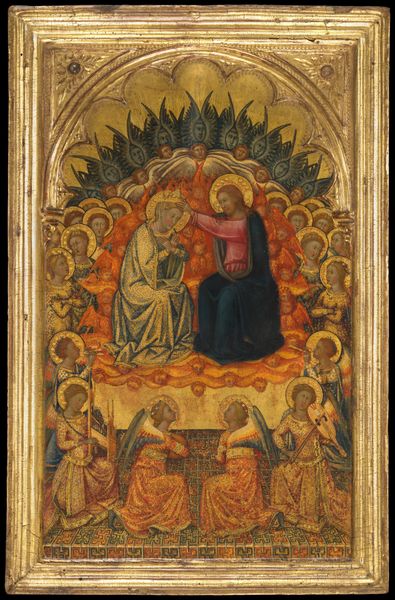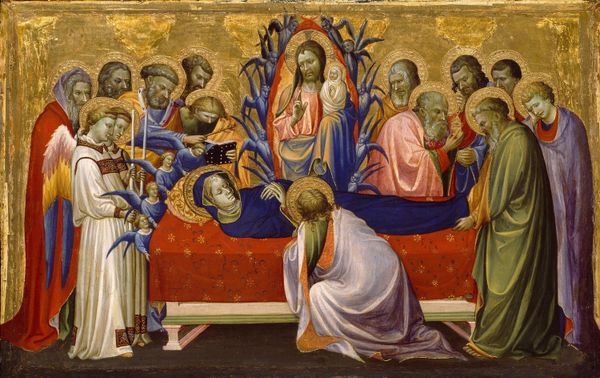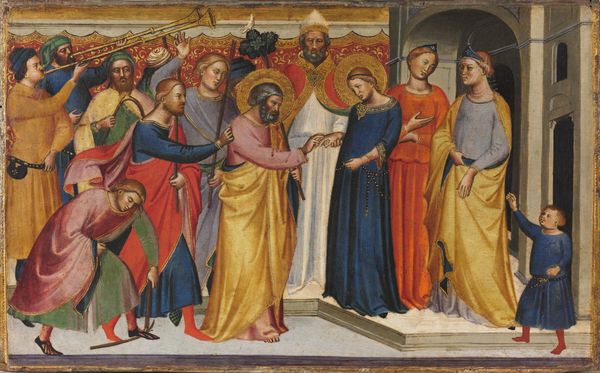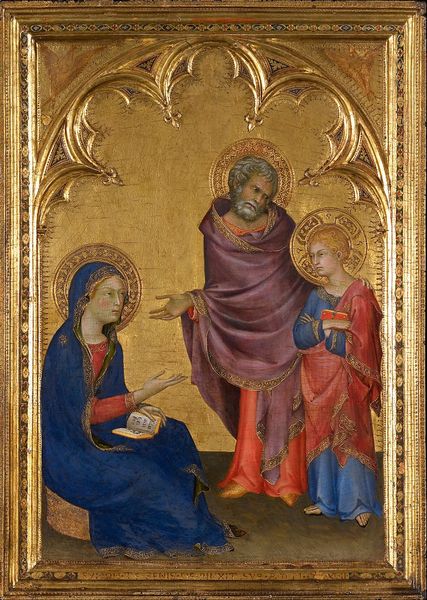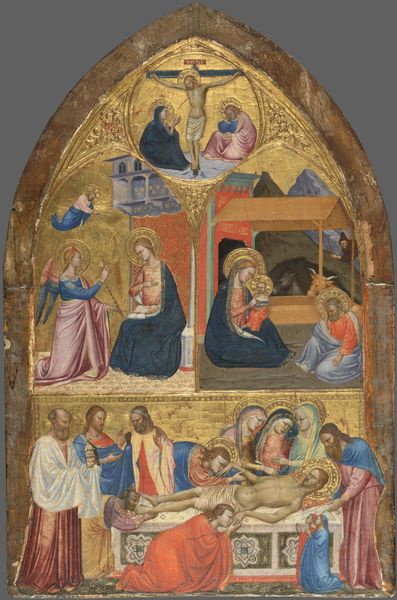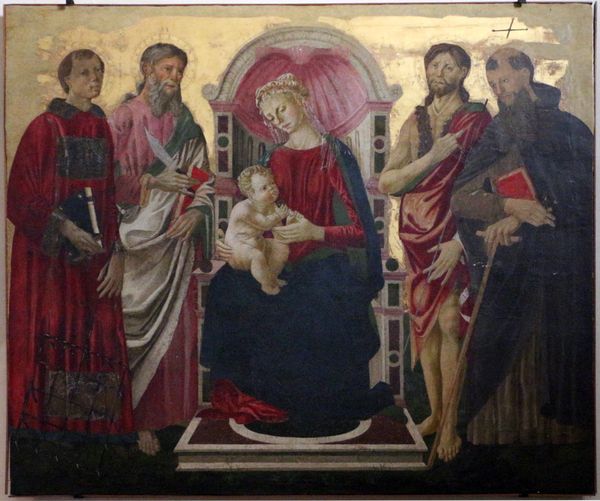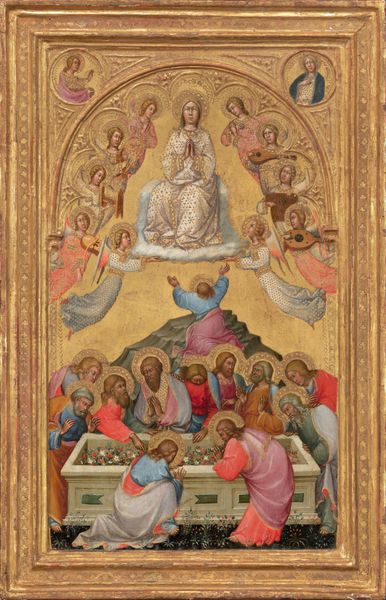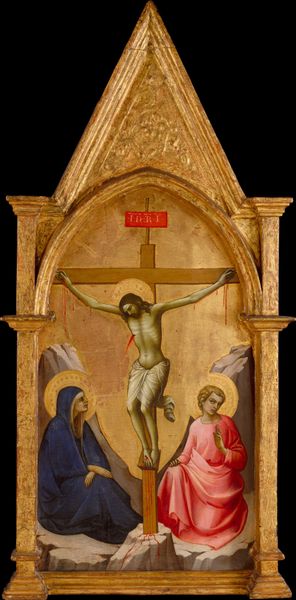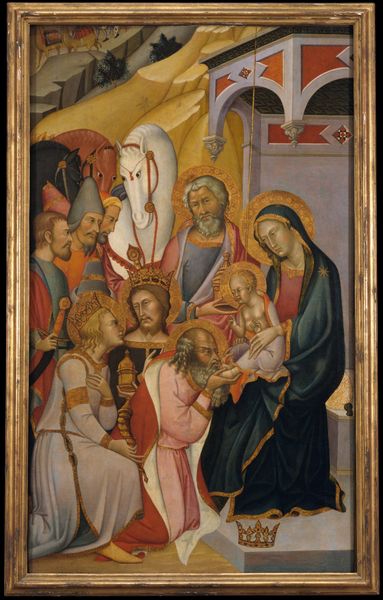
Altar retable painted on both sides with Christ Enthroned, the Twelve Apostles and Madonna and Child Enthroned with Saints 1330 - 1333
0:00
0:00
tempera, painting, oil-paint
#
portrait
#
medieval
#
tempera
#
painting
#
oil-paint
#
figuration
#
oil painting
#
jesus-christ
#
painting art
#
history-painting
#
italian-renaissance
#
angel
Dimensions: 59.9 x 305.5 x 1.6 cm
Copyright: Public Domain
Curator: I’m struck by how effectively the tempera and oil paint catch the light. The gold background positively glows. Editor: That's a great entry point to introduce what we’re looking at. This is an altar retable painted on both sides, depicting Christ Enthroned, the Twelve Apostles, and Madonna and Child Enthroned with Saints, made by Meo da Siena between 1330 and 1333. It's now at the Städel Museum. What kind of historical context shapes its iconography? Curator: Well, within its religious context, we see power dynamics explicitly represented, Christ as the supreme leader of the Church, surrounded by figures acting in service to both his message and the faith; consider the subtle variations in clothing and stance – clues that underscore their individual roles within this divine structure. Editor: Yes, the means of production in the early 14th century required collaboration and apprenticeship. It’s interesting how a single artist is credited, while numerous artisans contributed to processes like preparing the wood panel, grinding pigments, and applying gold leaf. These roles shaped the creation of pieces such as this retable. Curator: Absolutely. Considering issues of labor practices complicates that tidy notion of artistic genius, pushing us to ponder issues of class and access within the art world of the time and even today. Editor: Exactly. Even looking at the materials – tempera’s quick-drying properties versus the blending capabilities of oil paint. Curator: What can those physical choices suggest to us, historically? What level of resource was required to even engage in artistic pursuits in the first place? The piece itself prompts a much broader and crucial conversation. Editor: Absolutely. We might examine the work from an economic point of view. This altarpiece probably reflects patronage from the wealthy families, influencing artistic choices and stylistic expression tied directly into socioeconomic standings of both patron and the workshops that created it. Curator: Thinking through labor, access, power and patronage adds new dimensions to our understanding, allowing us to appreciate not just its aesthetic appeal, but its function in negotiating status. Editor: Ultimately, approaching this artwork through materiality and production methods allows a broader insight on artistic creation during this period, connecting craft, social, and religious forces that created it. Curator: I couldn't agree more. It goes beyond a singular perspective and helps understand a wider scope of art and culture.
Comments
No comments
Be the first to comment and join the conversation on the ultimate creative platform.
